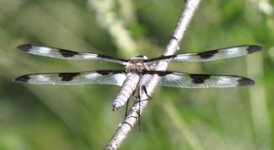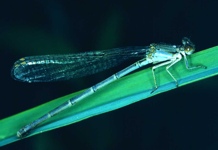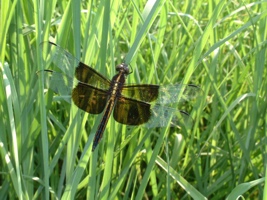|
The three insect orders with incomplete metamorphosis (hemimetabolous) are Ephemeroptera, Odonata, and Plecoptera. The Odonata are further divided into two suborders, Anisoptera (dragonflies) and Zygoptera (damselflies). All of these insects have immature stages that are found in aquatic environments, such as ponds and streams, and posses gills. The immatures, known as naiads, must come to the surface of the water or crawl out of the water for their final molt. The Ephemeroptera and Odonata are the only extant insects with a paleopterous flight mechanism and are often classified as infraclass Paleoptera. |
|
Order Ephemeroptera (Mayflies) Mayflies are medium-sized soft-bodied insects. They are common near aquatic environments, where the immatures develop. The adults have membranous wings, with the front wings being large and somewhat triangular while the hind wings are typically smaller and rounded. Unable to fold their wings over their back, they belong to the Paleoptera infraclass. The adults have one pair of small bristlelike antennae. The adults do not feed and have vestigial mouthparts. The "tails" on the abdomen are key characteristics of mayflies. Some mayflies have only a pair of cerci, others have a pair of cerci and a median caudal filament. |
 |
|
Order Odonata (Dragonflies and Damselflies) |
 |
|
Suborder Anisoptera The dragonflies have hind wings that are wider than the front wings, especially at the base. Also, the wings are held horizontally at rest. Typically, the compound eyes of dragonflies are touching at the top of the head. |
|
Suborder Zygoptera
|
 |
